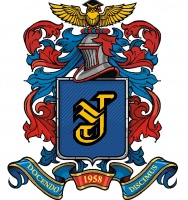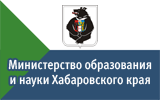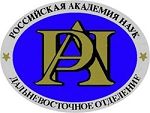Дальневосточный математический журнал
Защита сетевой структуры автономными аппаратами |
Гузев М.А., Цициашвили Г.Ш., Осипова М.А. |
2018, выпуск 2, С. 177-182 |
Аннотация |
| Анализируются две стратегии защиты сетевой группы тел от проникновения постороннего объекта. Первая стратегия основана на индивидуальной охране каждого тела, вторая предполагает применение автономных аппаратов для интегральной защиты сети. Показано, что во втором случае отношение минимального количества аппаратов, необходимых для обнаружения с вероятностью единица постороннего объекта, к количеству аппаратов, используемых в первой стратегии, обратно пропорционально корню квадратному из числа элементов сетевой структуры. |
Ключевые слова: мобильный объект, автономный аппарат, вероятность обнаружения |
Полный текст статьи (файл PDF) |
Библиографический список |
| [1] A.C. Corte, A. Battista, F. dellIsola, “Referential description of the evolution of swarm of robots interacting with the closer neighbours: Perspectives of continuum modelling via higher gradient continua”, International Journal of Non-Linear Mechanics, 80, (2016), 209–220. [2] M. Brambilla, E. Ferrante, M. Birattari, M. Dorigo, “Swarm robotics:a review from the swarm engineering perspective”, Swarm Intell., 7:1, (2013), 1–41. [3] A. Adamatzky, J. Jones, “Towards Physarum robots: computing and manipulating on water surface”, J. Bionic Eng., 5:4, (2008), 348–357. [4] N. Bellomo, F. Brezzi, “Mathematics, complexity and multi scale features of large systems of self-propelled particles”, Math. Models Methods Appl. Sci., 25, (2016), 207–214. [5] M.A. Herrero, J. Soler, “Cooperation, competition, organization: The dynamics of interacting living populations”, Math. Models Methods Appl. Sci., 25, (2015), 2407–2415. [6] M. Kardar, Statistical Physics of Particles, Cambridge University Press, 2007. [7] G.M. Zaslavsky, The Physics of Chaos in Hamiltonian Systems. Second edition, Imperial College Press, 2007. [8] V.P. Maslov, “Nonlinear Averages in Economics”, Mathematical Notes, 78:3-4, (2005), 347–363. [9] B. Alspach, “Searching and sweeping graphs: a brief survey”, Le Matematiche, 59:1, 2, (2006), 5–37. [10] P. Kafka, J. Faigl, P. Vana, “Random Inspection Tree Algorithm in visual inspection with a realistic sensing model and differential constraints”, IEEE International Conference on Robotics and Automation (ICRA), 2016, 2782–2787. [11] C.M. Monasterio, G. Oshanin, G. Schehr, “First passages for a search by a swarm of independent random searchers”, Journal of Statistical Mechanics: Theory and Experiment, 2011:6, (2011), 6–22. [12] E. Galceran, M. Carreras, “A survey on coverage path planning for robotics?”, Robotics and Autonomous Systems, 61:12, (2013), 1258–1276. [13] T.H. Chung, G. A. Hollinger, V. Isler, “Search and pursuit-evasion in mobile robotics”, Autonomous Robots, 31:4, (2011), 299–316. [14] М.А. Гузев, Г.Ш. Цициашвили, М.А. Осипова, “Вероятность обнаружения постороннего мобильного объекта необитаемыми подводными аппаратами”, Материалы седьмой всероссийской научно-технической конференции "Технические проблемы освоения мирового океана", 2017, 426–433. [15] М.А. Гузев, Г.Ш. Цициашвили, М.А. Осипова, М.С. Спорышев, “Вероятность обнаружения постороннего мобильного объекта необитаемыми подводными аппаратами как решение задачи Бюффона”, Дальневосточный математический журнал, 2, (2017), 191–200. [16] M.A. Guzev, G.Sh. Tsitsiashvili, M.A. Osipova, M.S. Sporyshev, “Probability of detection of an extraneous mobile object by autonomous unmanned underwater vehicles as a solution of the Buffon problem”, ArXiv: 1801.10318 [cs.RO], 2018. [17] В. Вавилов, А. Устинов, “Окружности на решетках”, Квант, 6, (2006). [18] G.H. Hardy, “On the Expression of a Number as the Sum of Two Squares”, Quart. J. Math., 46, (1915), 263–283. [19] G.H. Hardy, Ramanujan, Twelve Lectures on Subjects Suggested by His Life and Work, Chelsea, New York, 1999. [20] M.N. Huxley, “Integer points, exponential sums and the Riemann zeta function”, Number theory for the millennium, II, (2002), 275–290. |






